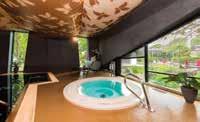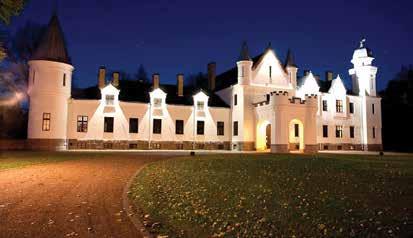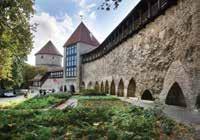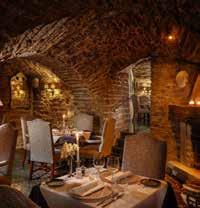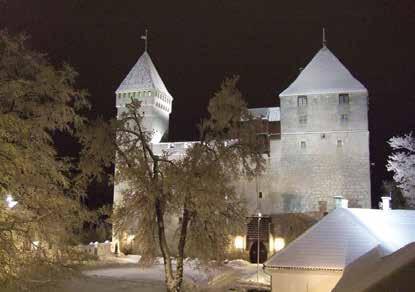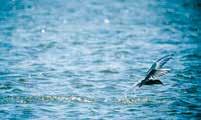SPA/ESTONIAN SPAS Lisaks sellele, et Eesti on kuulus Tallinna ajaloolise vanalinna poolest, on Eesti järk-järgult omandamas ka puhkeparadiisi maine. Riigi põhjamaine kliima on aidanud looduskaunis keskkonnas luua arvukalt kaasaegseid spaasid ja tervisekeskusi, kus on võimalik ilmast hoolimata nautida massaaži, kuuma mullivanni ja paljusid muid terviseprotseduure, ujuda ja külastada ilusalonge. Besides being famous for Tallinn's historic Old Town, Estonia is gradually gaining a reputation for being a relaxation paradise. The country’s Nordic climate has contributed to the creation of numerous modern spas and health centres in beautiful natural surroundings, where it is possible to enjoy massage, hot Jacuzzi and a range of other health treatments, take a swim and visit beauty salons regardless of the weather outside.
Eesti kaunid liivarannad, populaarsed hotellid ja veepargid ning tunnustatud spad ja mudaravikeskused on külastajaid meelitanud ja hellitanud juba aastaid. Üks põhjus, miks sellised kuurordid siin välja arenesid, oli kohalik muda, mis oli kuulus oma terapeutiliste omaduste poolest. Pärnu, Haapsalu, Kuressaare ja Narva-Jõesuu on olnud moodsad kuurordid alates 1820. aastatest, samas kui Värska, Kubija, Pühajärve, Toila, Viimsi ja muidugi Tallinn uhkeldavad ka suurepäraste spaadega. Estonia’s beautiful sandy beaches, popular hotels and water parks and renowned spas and mud therapy centres have been attracting and pampering visitors for many years. The country’s spa traditions date back hundreds of years. One of the reasons such resorts developed here was the local mud, famed for its therapeutic qualities and which continues to be used today. Pärnu, Haapsalu, Kuressaare and Narva-Jõesuu have been fashionable resorts since the 1820s, while Värska, Kubija, Pühajärve, Toila, Viimsi and of course Tallinn also boast excellent spas.
In Estonia you may in several places find therapeutic mud, the healing properties of which were known in folk medicine since ancient times. Spas in the present meaning of the word were established as early as in the 1820- 40’s. Establishments were especially built or reconstructed for the use of local seawater or mud for the treatment of ailments under the supervision of physicians. Today the main objectives of the spa treatments are to give prophylactic care and spa treatments of the kind, which hinder ailments from becoming chronic, lessening the need of sick care, thereby saving costs, and to restore the working capacity and general capacities of the ailing. In our continually more and more hectic rhythm of life many middle aged and even younger persons suffer from stress. In the course of time the Estonian spas have also partly changed their policy from being purely care centres towards being recreation centres, where the clients in addition to the treatments have the possibility to occupy themselves in various healthy activities, go in for sports or just relax and spend their time comfortably. Usealta Viron alueelta löytyy lääkitsevää mutaa, jonka hoitava vaikutus on kansanlääketieteen tiedossa ollut jo vuosisatojen ajan. Kylpylä nykyaikaisessa mielessä perustettiin tänne jo 1820-1830-luvulla. Paikallista merivettä tai mutaa alettiin lääkereiden valvonnassa siihen tarkoitukseen uudistetuissa tai varta vasten rakennetuissa rakennuksissa käyttää eri sairauksien hoitoon. 35

